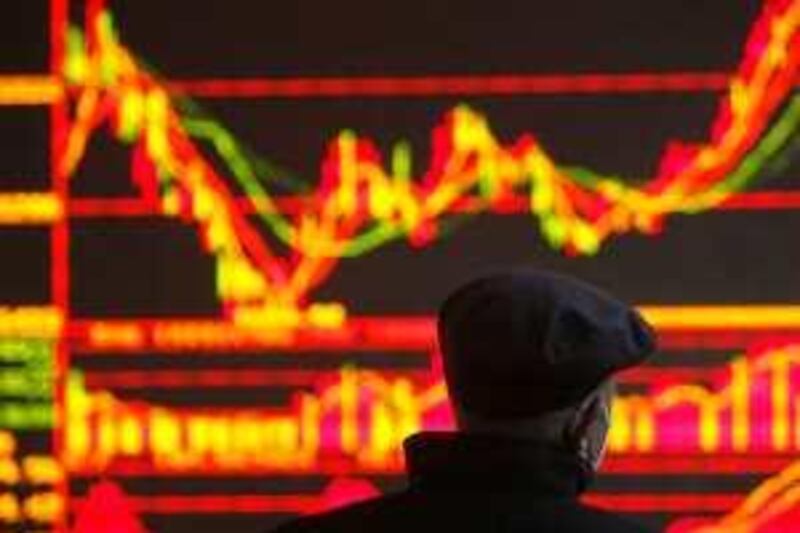There is more than one way to jump-start an economy. The American way - the sausage-factory way - entered a new phase last week with the passage of a US$787 billion (Dh2.89 trillion) stimulus package by a bitterly divided Congress. Having begun with a White House pledge of bipartisanship two weeks ago, the debate over the stimulus package proposed by the US President, Barack Obama, descended into reciprocal charges of bad faith and impugned motives. Republicans demanded aggressive tax cuts and recoiled at the bill's spending programmes, which they said represented a huge burden for an unborn generation of taxpayers. Democrats pointed out that Republicans had just taken a drubbing in national elections in response to an economic implosion that happened on their watch. Republicans threatened to derail the bill with a filibuster, or deliberate delaying tactic. Democrats countered by accusing the Republicans of holding a fragile economy hostage to the kind of supply-side economic orthodoxy that led to the recession in the first place. In the end, the 1,100-page bill was passed by the Senate after three moderate Republicans defected to Mr Obama's side. The package includes $212bn in tax relief, while the balance will be spent on everything from new housing and transport projects to energy and water systems. Much of those outlays will be channelled through state governments, which have the authority to spend the money pretty much however they see fit, including debt reduction, which will do little to generate new jobs. Nor is the bill structured for a quick-fix; its spending mechanisms won't kick in fully until 2010 or even 2011, while adding more debt - about $1tn including interest rate payments - than the combined value of the first three years of budget shortfalls under the former president, George W Bush. And this is just one component to Mr Obama's recovery plan. Last week, the Treasury secretary, Timothy Geithner - having just survived a minor scandal involving some $34,000 in back taxes - announced the details of his financial sector rescue plan, which is at least as important for recovery as the stimulus package. Neither Mr Geithner nor his plan, which could cost as much as $1tn to implement, inspired much confidence. Stock investors panned Mr Geithner's less than charismatic delivery and a lack of details about the plan itself, in particular an ambitious public-private partnership to buy bad assets. The Dow Jones Industrial Average shed 4.6 per cent of its value for the day, and was left wallowing at its lowest level since Mr Obama's inauguration. Then there is the Chinese way. In November, Beijing announced its own stimulus package which, at 4tn yuan (Dh2.1tn), is far larger as a percentage of its economy than is Washington's version. Needless to say, China's political leaders are unburdened with such trifles as legislative procedure. When they looked in their rear-view mirrors last autumn and saw the global recession coming after them, they simply huddled with their finance mandarins and authorised a transfer from their $1.95tn in foreign exchange reserves to the financial system. Chinese banks, unlike their bad-debt-plagued US counterparts, are reviving the economy by writing loans. The value of new borrowing last month, at $237bn, was more than double the record set a year earlier, according to Beijing's central bank, and construction of new public works, housing developments and railway lines is well under way. The price of steel has soared and the decline in industrial output has been arrested. Despite a decline in exports - China's lifeblood - a survey of 14 economists posted last week by Bloomberg News suggested China could be the first economy to recover from the global slowdown thanks to increased consumption and investment. They anticipate annualised growth of between 6 per cent and 8 per cent, which China needs to regenerate the tens of millions of jobs that have been lost in the past few months. Has China, the world's third-largest economy, already turned the corner? Could this be the beginning of the great "rebalancing" of global trade flows as Chinese consumers learn to spend and Americans learn to save? It will take six months to say for sure. If anything, the unseemly haggling in Washington and the legislative and political battles to come underline just how deep is America's economic hole relative to China's. While toxic debt did much to trigger the US recession, the amount of debt overall - an estimated several trillion dollars over the life of Mr Obama's first term - will make a US recovery that much more difficult. Whether they like it or not, Americans will have to re-evaluate the fundamentals of their free-market economy, from the virtue of home ownership to the viability of suburban living. China, on the other hand, has only to keep doing what it has been doing. sglain@thenational.ae
China moves on while US bickers
There is more than one way to jump-start an economy - there is the American way and also the Chinese way.

More from the national




